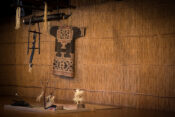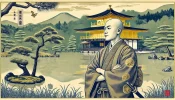Asuka Era of Nara – The Age of Reform and the Blossoming of Buddhism
The Asuka era (592-710 AD) marks one of the most transformative periods in Japanese history, and Nara was right at the heart of it. This was an age of cultural, political, and religious change, as Japan began to establish the foundations of its centralized governance and cultural identity. With the introduction of Buddhism and the development of Japan’s first permanent capital, Asuka, located in what is now Nara, became a symbol of progress and reform. Join us as we explore the profound transformations of this vibrant era and the historical legacy it left behind.
- The Beginning of the Asuka Era and Nara’s Importance
- The Introduction and Spread of Buddhism
- Key Figures of the Asuka Era
- Reforms and Cultural Evolution in the Asuka Era
- The Development of Asuka Art and Architecture
- Modern Connections to the Asuka Era
- Conclusion: Experiencing the Foundations of Japan
The Beginning of the Asuka Era and Nara’s Importance
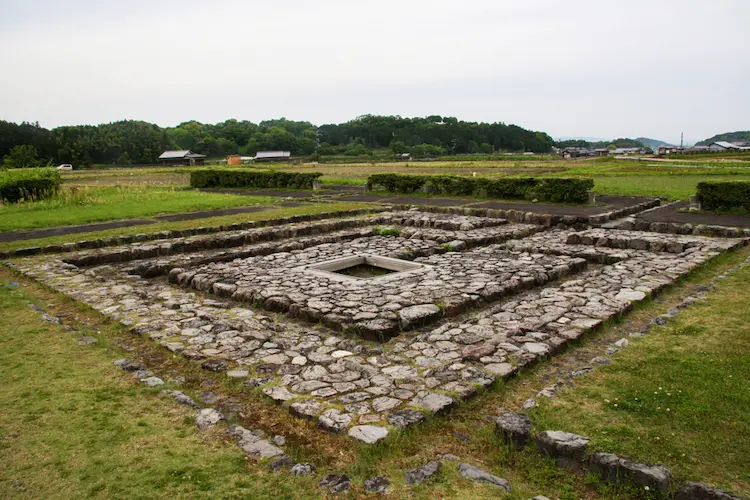
The Asuka period was a time of dynamic political changes and the establishment of new power centers.
- Political Background: The Asuka era was marked by the rise of influential leaders like Prince Shōtoku and the powerful Soga clan. During this time, the centralization of power became more pronounced, laying the groundwork for Japan’s future political landscape. Nara, with its fertile lands and strategic positioning, was pivotal in these shifts, serving as the nerve center for emerging power struggles.
- The Establishment of Asuka Capital: Asuka, often recognized as Japan’s first “capital,” represented a deliberate shift towards a more centralized form of governance. This decision to build the capital in the Nara region was influenced by the area’s ideal geography, providing both defense and fertile land for sustenance. Asuka became a focal point for political consolidation, where early forms of government structure began to take root, ultimately shaping Japan’s future.
The Introduction and Spread of Buddhism
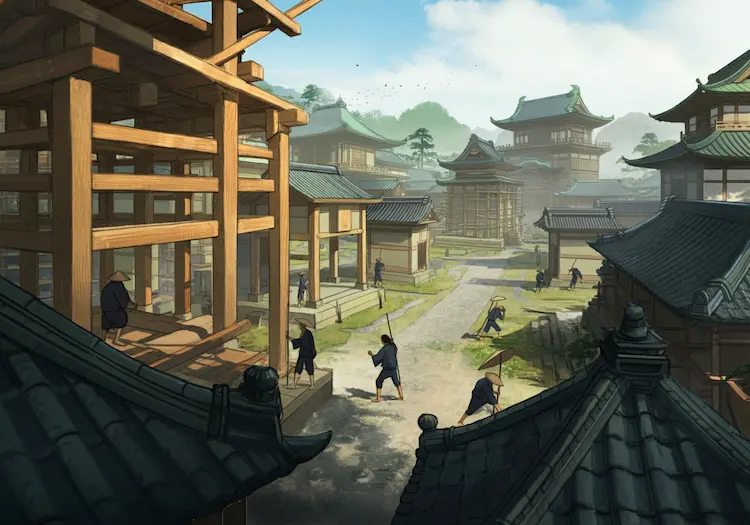
The Asuka era is especially known for the introduction and establishment of Buddhism, which would profoundly shape Japanese culture.
- The Arrival of Buddhism: Buddhism first arrived in Japan from Korea in the mid-6th century. Nara soon became the epicenter of Buddhist growth, as various leaders recognized the religion’s potential to unify and legitimize their rule. Prince Shōtoku, a pivotal figure of this period, was instrumental in adopting and promoting Buddhism as a tool for cultural and political reform.
- Establishment of Temples: Some of Japan’s earliest and most significant temples were built during the Asuka era. Asukadera, the first major temple, set the standard for future temple architecture and became a symbol of Japan’s early embrace of Buddhism. Hōryūji, established by Prince Shōtoku, remains one of the oldest wooden structures in the world, and Shitennōji, also attributed to his efforts, played a key role in spreading Buddhist teachings. These temples were not merely places of worship but centers for education, culture, and power, greatly influencing the spiritual and societal fabric of Nara.
Key Figures of the Asuka Era
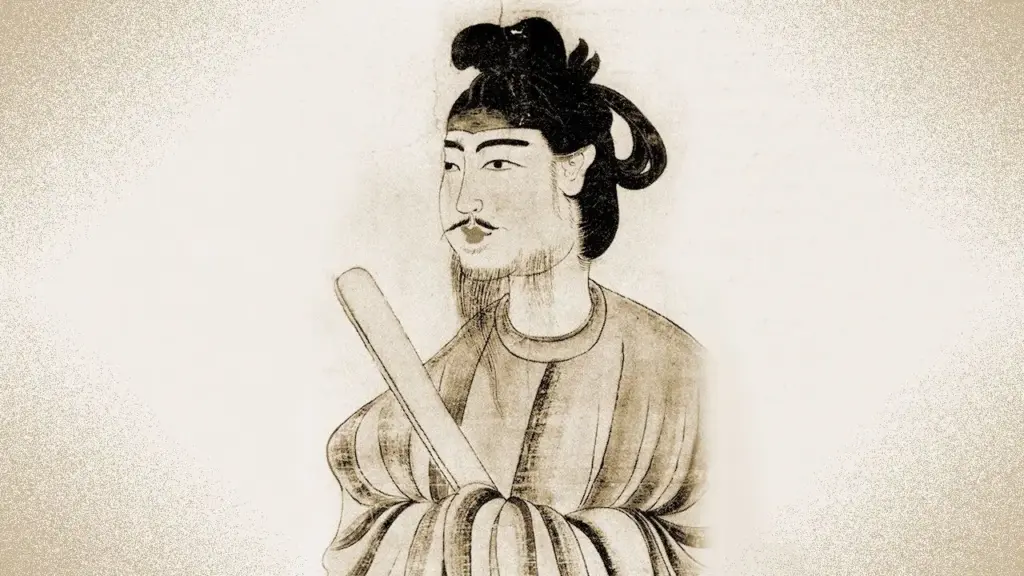
The history of the Asuka period is incomplete without mentioning its influential leaders.
- Prince Shōtoku: Prince Shōtoku stands as one of the most iconic figures of the Asuka era. He is credited with establishing the Seventeen-Article Constitution, which laid down the moral and political principles that would guide the emerging centralized government. His passion for Buddhism led to the creation of numerous temples and promoted the acceptance of Buddhist teachings across Japan. His influence still resonates in Nara, where his legacy can be seen in the monuments and temples he helped establish.
- The Soga Clan: The Soga clan, a powerful family that gained considerable influence during the Asuka era, played a crucial role in supporting the spread of Buddhism. By backing Prince Shōtoku and promoting Buddhism, the Soga family established a power base that directly influenced the political landscape of Nara. They were instrumental in bringing Korean and Chinese cultural elements into Japan, helping shape the cultural and political environment of the period.
Reforms and Cultural Evolution in the Asuka Era
The Asuka era wasn’t just about religious changes—it was also a period of significant political reforms and cultural exchange.
- The Seventeen-Article Constitution and Centralization: Prince Shōtoku introduced the Seventeen-Article Constitution in 604 AD, which emphasized harmony, respect for authority, and the role of Buddhism in governance. This constitution marked the beginning of a more structured and centralized government. It played a foundational role in transforming Nara into the heart of political power, where the imperial court began to take shape.
- Diplomatic and Cultural Exchange: The Asuka period saw a flourishing of cultural and technological exchange with China and Korea. Envoys were sent to China, and the influence of Chinese governance, writing systems, and culture began to permeate Japan. In Nara, this influence was visible in the adoption of Chinese-style clothing, architecture, and the use of kanji characters. Pottery, weaving techniques, and Buddhist art flourished, blending imported ideas with local creativity to form a unique cultural identity.
The Development of Asuka Art and Architecture
The Asuka era was marked by significant achievements in art and architecture, leaving a lasting legacy in Nara.
- Characteristics of Asuka Culture: The art and architecture of the Asuka period were heavily influenced by Buddhist themes, which introduced a new aesthetic to Japan. This included intricate carvings, gilded bronze statues, and the development of temple complexes. The influence of mainland Asia was clear, yet these elements were uniquely adapted to fit Japan’s own cultural context.
- Notable Artistic Contributions: Some of the most famous artistic works from this era include the Shaka Triad at Hōryūji, believed to be crafted by the renowned sculptor Tori Busshi, and the beautiful Tamamushi Shrine, which showcases the intricate craftsmanship of the period. These artifacts and structures symbolize the cultural and religious transformation of Nara, blending spiritual devotion with artistic innovation.
Modern Connections to the Asuka Era
Today, the legacy of the Asuka era can still be felt in Nara, where many sites from this transformative period have been preserved.
- Visiting Historical Sites: Visitors to Nara can explore Asuka-dera, known for being Japan’s first Buddhist temple, as well as other notable sites like the Ishibutai Kofun and the Amakashi Hill, which offers breathtaking views of the Asuka village. These locations provide a window into Japan’s early attempts at state-building and cultural transformation.
- Cultural Experiences: In Nara, you can take part in workshops that allow you to experience Asuka-era culture firsthand. This could include trying your hand at Buddhist statue carving, learning about traditional Asuka cuisine, or even recreating the garments worn by early Japanese courtiers. Such activities help bridge the gap between the distant past and present, bringing the Asuka era to life for modern visitors.
Conclusion: Experiencing the Foundations of Japan
The Asuka era was a period of remarkable change—a time when Nara emerged as a central hub for political reform, cultural growth, and spiritual transformation. From the establishment of Japan’s first capital to the blossoming of Buddhism and the introduction of monumental reforms, the legacy of the Asuka period still echoes today. By visiting Nara and experiencing its historical landmarks, we can gain a deeper understanding of how this era laid the cultural and political foundations of Japan. Step back in time and immerse yourself in the age of reform, where the seeds of Japan’s enduring heritage were first sown.



